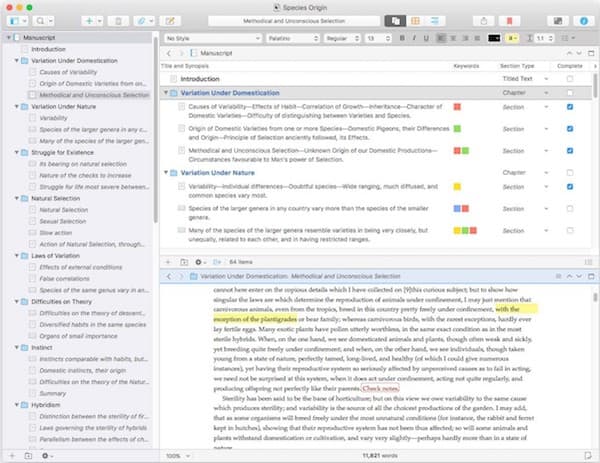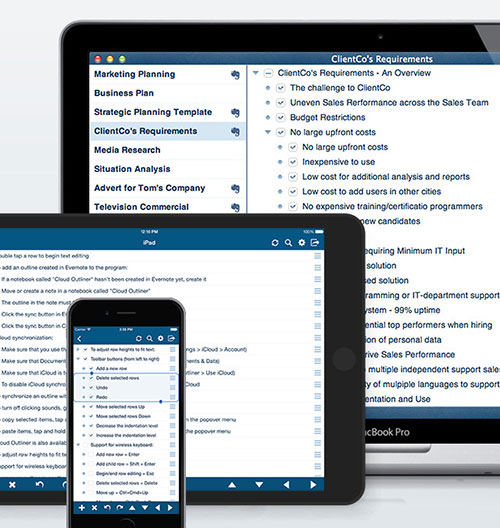

Similarly, with Split the current row at the insertion point set, you can split the current row into two rows at the cursors position by pressing Return. You can change this to Insert a line break in the current row by switching the radio buttons however, pressing Option-Return always inserts a new line in the current row. These options are as follows: When pressing Returnīy default, pressing Return creates a new empty row. Use the Keyboard Preferences to adjust how OmniOutliner reacts when you press certain keys.
FREE OPML EDITOR OUTLINER FULL
Full Screen Mode This preference switches between the Standard full screen mode, with the Toolbar visible at all times, and Distraction Free mode, which hides the Toolbar unless you move the mouse cursor up to the top of the screen. When unchecked, any new rows you create revert to the default styles from the theme you’ve chosen.

When this is checked and you add a new row (by pressing Return or Shift-Return), that new row adopts the styles of the row you were previously in. Styles Turn on or off the setting for a new row to adopt the style from that row’s sibling. If you uncheck this option, the URLs you enter are rendered as Rich Text and clicking them will not open the URL in your default web browser. Links Turn on or off the ability to make hyperlink (a URL such as ) clickable.

Unlike theming for OmniOutliner files (where text and row styles are applied and saved), this preference is purely visual. OPML Display Theme Choose the theme that applies to. If you want to change the default template, click Change Template and select a different theme from the browser. You can choose between opening the Resource Browser (where you can choose a template for a new document, or open a recently edited one), or creating a new document based on the default template. Options in General Preferences include: New DocumentsĬhoose what happens when you create a new document, by either choosing File ▸ New or using the Command-N keyboard shortcut. Be sure to include the URL of your status center so we can see what you're talking about.Use the General Preferences pane to make changes that apply across the board for everything you do in OmniOutliner. If you have question, post a comment below. Just replace the URL of my outline with the URL of yours. However, if you use your own outliner, you have to modify the source (see above). You can if you must write the OPML by hand, but I don't recommend it. If you want to make your own OPML, there are a number of outliners out that there that generate it, for example OmniOutliner on the Mac, I'm told is very nice (my friend Brent Simmons is working on it these days). You can probably get a lot done just by hacking the CSS, but you're free to change any of it. It takes an OPML file and converts it to JSON, and then passes it through an outline renderer.

It's not open source, because it would take a lot of work to make it open source, and I don't have time. If so, here's a view-source link for the template for status centers. Note that unlike changes to the outline itself, which are automatic and real-time, these changes require that you re-build the status center outline. In that dialog, the "long" title appears at the top of the page, and the short title appears in the title of the HTML. For that, choose Set title & description in the File menu. You probably want to change the title at the top of the page.
FREE OPML EDITOR OUTLINER UPDATE
You can go back and edit the outline and it'll automatically update the status center. It will open a new page with your status center page, ready to be shared with other people. Then choose Status Center from the (new) Build sub-menu of the Outliner menu.Click OK to confirm, and then OK to dismiss the dialog that appears with the URL. When you're ready to view it as a status center, make your outline public, by choosing Get public link from the File menu.That will give your status center a lot of starting material. If you want, you can import the OPML from my outline, using the Import OPML command in the File menu. Add a few top level headlines, and then a few second-level headlines underneath them.Create a new outline called myStatus.opml. First, you create and edit the outline using Little Outliner.
FREE OPML EDITOR OUTLINER HOW TO
This is a short doc that shows how to create and edit a "status center" page like /status.


 0 kommentar(er)
0 kommentar(er)
